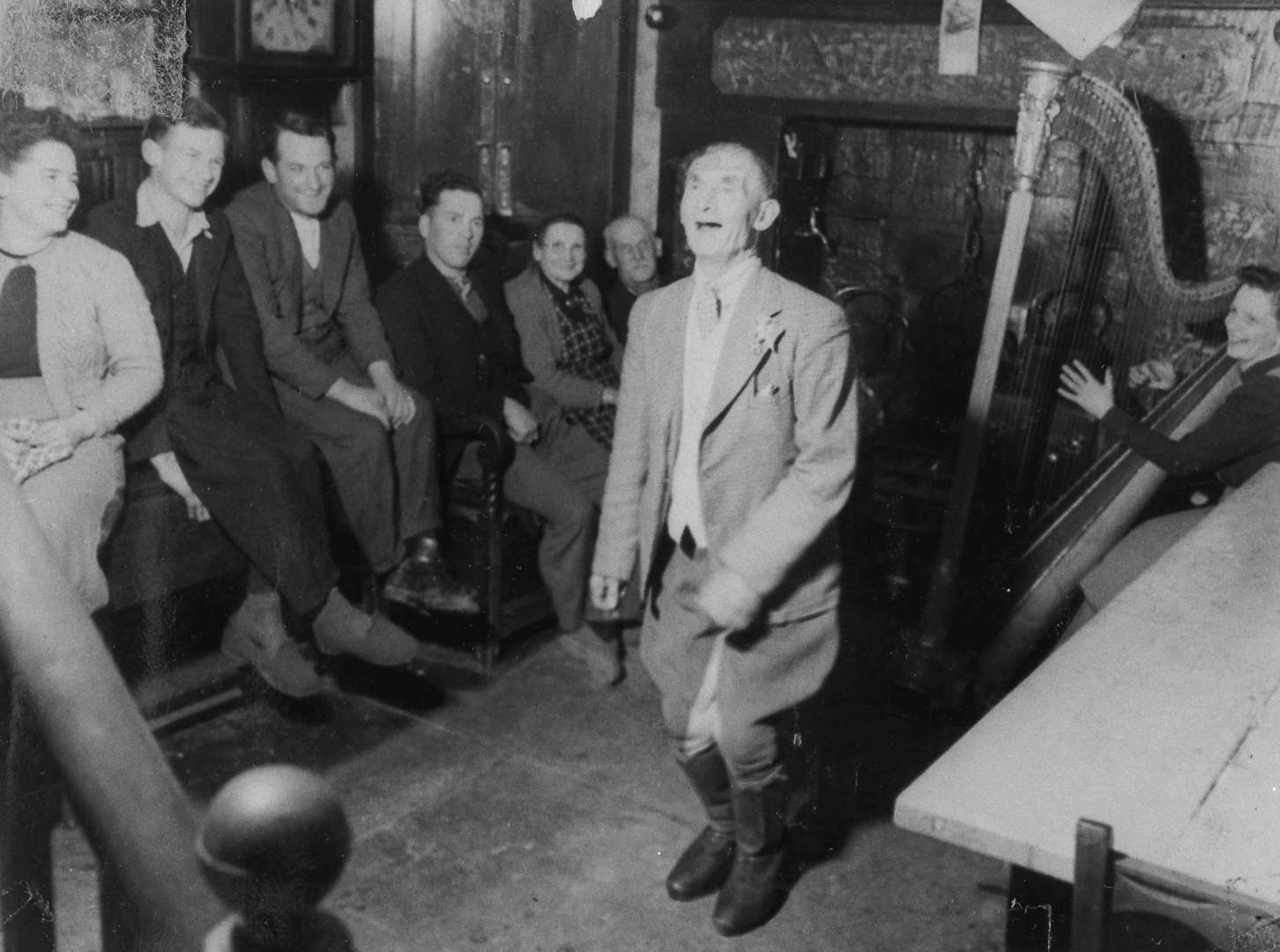Howel Wood dancing at Pant y Neuadd, Parc, near Bala, in about 1945. Nosweithiau llawen were often held here. Howel worked and lived at Pant y Neuadd for over 40 years.
Clog dancing is one of Wales’s oldest living traditions. Originally performed by farmers, slate quarry workers and colliers in pubs, or in the home, dancers competed to show skill, athleticism and tricks - snuffing out a candle, jumping over a broom and leaping high into the air. Vital to the survival of this tradition was Howel Wood of Bala, a member of the famous Welsh gypsy family. His talent is captured in the The Last Days of Dolwyn in 1949, starring Richard Burton. He inspired a long line of clog dancers in Wales – some of whom enjoyed celebrity status.




